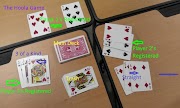Something that’s consistently annoyed me for the relatively short time I’ve been in Korea is the lack of diversity in the average citizen's music collection. Odds are, when you’re getting your grub on at the local dakgalbi joint, or having a pint with some friends, you’ll hear a collection of the same 15-20 k-pop tracks that no one ever seems sick of and receives the same amount of enthusiasm be it the 1st or 15th time they've heard it that day. Exhibit A: I was forcefully made to jive it out to “Let it Go” 3 times during a 45-minute dinner a couple months ago, who played it like clockwork every 15 minutes.
This is why my discovery of Kim Kwang-seok, a deceased yet still-celebrated hero of Korean folk rock, really caught my attention-- especially when I discovered that he's a native of Daegu. The gifted singer-songwriter died tragically in 1996. While the official story is that he committed suicide, many feel that his death was due to a murder plot by his wife, who was attempting to acquire the rights of his music rather than allowing his family to keep the royalties. Regardless, his death, which occurred a mere 16 days before his 32nd birthday, is still shrouded in mystery. That’s why the chance for me to see Daegu's not-so-secret downtown corridor, in which a shrine of street art is dedicated to him, was too sweet to pass up.
 At the beginning of the street, I was greeted by a gold statue of the man himself playing an acoustic guitar. I blended in with others who'd made the pilgrimage, and as we walked, I looked around and found my surroundings thrilling and vastly diverse. Toddlers strolled around, eating star-shaped sugar candies they'd just made themselves. Korean hipsters soaked in the lightly defaced murals. I ducked out of the way in the narrow alleyway for a couple in matching outfits to get by and headed to an gallery still under construction. A satisfied looking artist inside was covered in paint, offhandedly jamming out with the street buskers outside, who were trying to collect loose change by performing Kim Kwang-seok cover tunes. The only thing missing from the scene was an excess of foreigners.
At the beginning of the street, I was greeted by a gold statue of the man himself playing an acoustic guitar. I blended in with others who'd made the pilgrimage, and as we walked, I looked around and found my surroundings thrilling and vastly diverse. Toddlers strolled around, eating star-shaped sugar candies they'd just made themselves. Korean hipsters soaked in the lightly defaced murals. I ducked out of the way in the narrow alleyway for a couple in matching outfits to get by and headed to an gallery still under construction. A satisfied looking artist inside was covered in paint, offhandedly jamming out with the street buskers outside, who were trying to collect loose change by performing Kim Kwang-seok cover tunes. The only thing missing from the scene was an excess of foreigners. The murals are interesting to say the least. While some seem to have nothing to do with Kim Kwang-seok, many are depictions of him describing stories and situations occurring in different songs. One of my favourites involved Gwang-seok in a “superband” with other music legends such as Eric Clapton, Stevie Wonder, Kurt Cobain and Kenny G (this band was so legit, Cobain got demoted to drummer). Other than the murals, I saw a vast array of other music-themed art installations and statues, a cage covered in “Love Locks” (similar to the Pont des Arts and other bridges in France), a chalkboard where thousands of people have written out their bucket list wishes and a variety of tiny, hole-in-the-wall galleries and cafés.
The murals are interesting to say the least. While some seem to have nothing to do with Kim Kwang-seok, many are depictions of him describing stories and situations occurring in different songs. One of my favourites involved Gwang-seok in a “superband” with other music legends such as Eric Clapton, Stevie Wonder, Kurt Cobain and Kenny G (this band was so legit, Cobain got demoted to drummer). Other than the murals, I saw a vast array of other music-themed art installations and statues, a cage covered in “Love Locks” (similar to the Pont des Arts and other bridges in France), a chalkboard where thousands of people have written out their bucket list wishes and a variety of tiny, hole-in-the-wall galleries and cafés.
Just outside of the artistic wonder and vibrancy of the area is a large market where you can find anything from clothes for kids, beer, crab legs, and gawking old people. I personally didn’t explore too much, but the place is shrouded in mystery and probably has more interesting wonders hidden beyond all the ajashis playing backgammon.
Directions: Thankfully, the place is super easy to find. Get off at Kyungpook University Hospital station on the Daegu Metro and take Exit 3. Walk straight for a couple blocks, once you pass a nutritional store with photos of Korean men with rippling muscles, you’ll know you’re near. The aforementioned statue can be found on your right. Happy exploring!
Watch Kim Kwang-seok's “Too Painful a Love Was Not Love”:





0 Comments